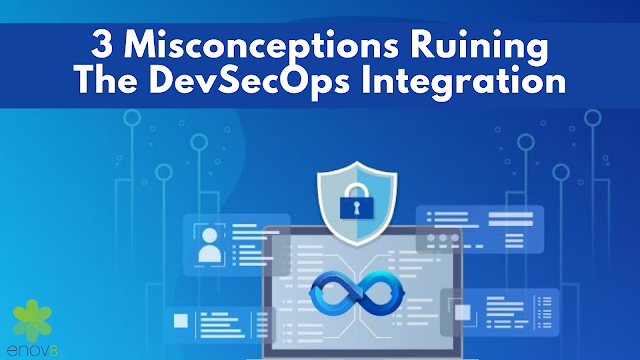3 Misconceptions Ruining The DevSecOps Integration
Compromised database belonging to ProctorU impacted 18 different companies and exposed 386 million records.
An intruder gained access to the Ubiquity Networks database through third-party servers. Ubiquity is one of the world's biggest vendors of IoT devices.
Every IT company aspires to be on every media agency's "hot news" and "latest headline" section, but not with such negative news. That's why DevSecOps security was introduced.
Current Scenario Of Application Security System
3 Misconceptions Ruining The DevSecOps Integration
Train Developers With Core Security Practices To Reduce Cyberattacks
- Your developers are the creative minds dedicated to crafting an application or software function that brings in revenue for the company.
- However, security vulnerabilities are essentially coding errors or mistakes unintentionally made by developers. So to combat this, management generally wants to train developers in security to minimise such mistakes. Does this work?
- Although imparting knowledge to developers about application security is an excellent step forward, it is not the solution to the bigger picture and isn't sustainable.
Solution
- Empowering and arming your DevOps teams with security tools that help them integrate security in the codebase from the start.
- Purpose-built DevSecOps security tools provide DevOps teams with insights on security failure and vulnerability, including guides on how to make fixes.
Security Teams Intervene At Mature Stages
- In the conventional software development process, security teams start reviewing the application for code vulnerabilities in the mature stages.
- They need to ensure best security practices for compliance, configuration checks, vulnerability management, network security and least-privileged access.
- Bolting security, in the end, can become burdensome.
Solution
- The solution should ensure that security is integrated throughout the development process in close collaboration with the DevOps teams.
- This approach doesn't slow down the SDLC pipeline. It empowers DevOps to deliver applications faster. While security teams have the required visibility to ensure the software is deployed in compliance with enterprise and regulatory security policies.
Security Teams And DevOps Team Should Work Independently
Solution:
- Security teams can empower DevOps. Security teams should collaborate with DevOps teams to provide the right test environment management and security tools and processes for satisfying the security requirements in a DevOps-friendly manner.




Comments
Post a Comment